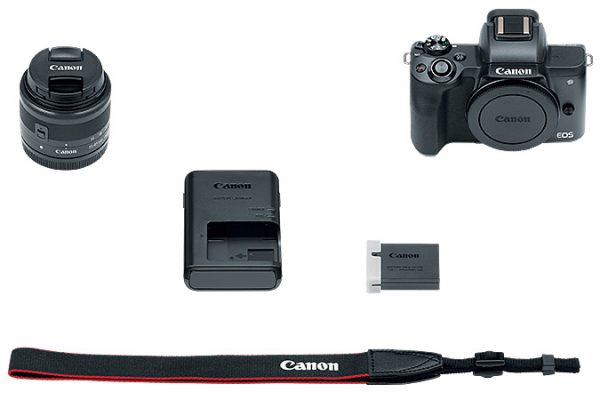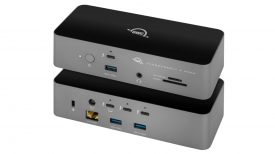Canon has finally released a mirrorless camera capable of shooting 4K video with the new EOS M50. The M5 looks to be a decent entry level camera for VLoggers, students, and anyone else who wants to shoot photos and a bit of video.
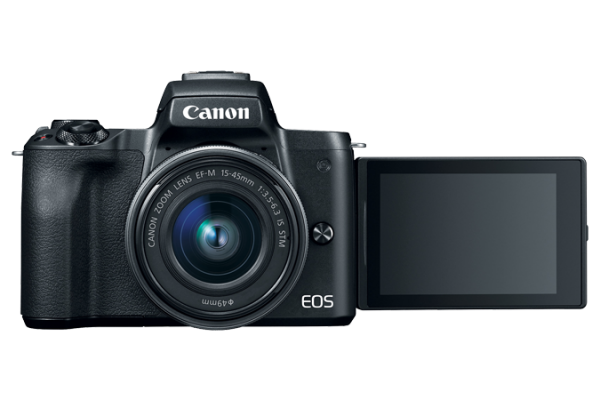 At a glance
At a glance
24.1MP APS-C CMOS Sensor
DIGIC 8 Image Processor
2.36m-Dot OLED Electronic Viewfinder
3.0″ Vari-Angle Touchscreen LCD
UHD 4K and HD 720p120 Video Recording
Built-In Wi-Fi with NFC, Bluetooth
Dual Pixel CMOS AF
ISO 100-25600, Extended ISO 51200
Combination 5-Axis Image Stabilization
Video Specs
As far as bitrates go, it has a maximum bitrate of 120 Mbps when shooting 4K (UHD) and up to 60 Mbps at Full HD when shooting at 50fps or 59.94fps.
The M50 records in MPEG-4 AVC/H.264 in the following resolutions and bitrates:
UHD (3840×2160) at 25fps or 23.98fps at 120Mbps
Full HD (1920×1080) at 23.98fps, 25fps, or 29.97fps at 30MBPS
FULL HD (1920×1080) at 50fps and 59.94fps at 60Mbps
HD (1280×720) at 100fps or 119.9fps at 52Mbps
HD (1280×720) at 50fps or 59.94fps at 26Mbps
While these bitrates are ok the camera can’t do anymore than 59.94fps in Full HD (1920×1080). If you want to shoot at 100 or 119.98fps you can only do so at 1280×720 resolution at 52Mbps.
Important to note though is that when you are shooting in 4K, there is an additional crop of 1.7x and autofocus is limited to contrast detection only and doesn’t use the DPAF system.
The ISO levels when shooting video are limited to the following:
UHD (3840×2160) 100-6400ISO
Full HD (1920x1080p) 100-12600ISO (expandable 25600ISO setting is available).
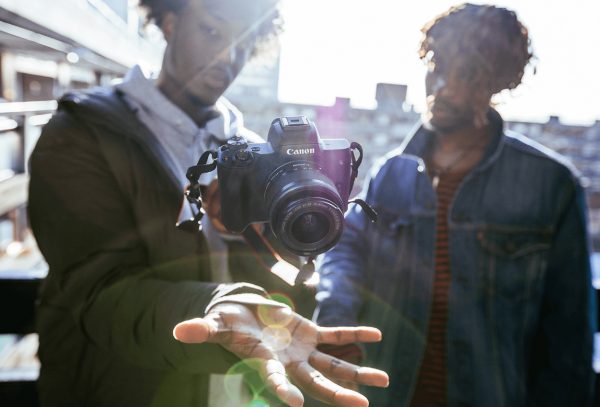
Depending on which lens you use with the M50, the camera will use 99 AF points or the expanded 143 AF points. A full list can be found here of compatible lenses can be found here. The camera uses Dual Pixel AF and in video modes a (apart from UHD) it can do Face and Follow Priority Auto Focus as well as Zone AF. When filming UHD you can only do Contrast AF.
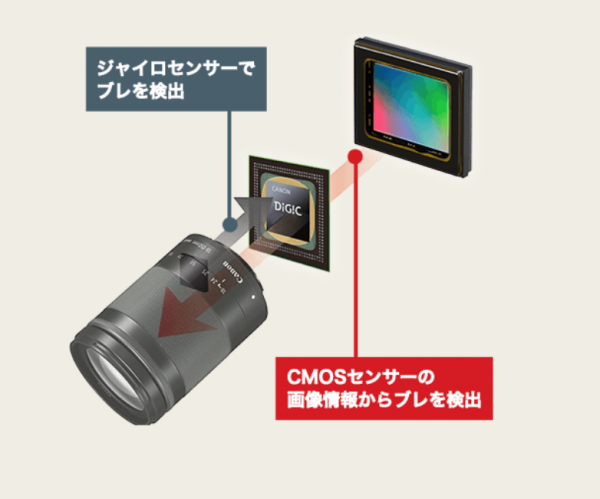
The camera has a built-in Timelapse video function and a in-body electronic stabilisation function (combination IS). The electronic stabilisation function can support the Canon EF-M15-45mm F3.5-6.3 IS STM , EF-M18-150mm F3.5-6.3 IS STM lenses and EF-M55-200mm F4.5-6.3 IS STM lenses. The M50 has a Micro HDMI output but just like early Canon DSLRs the red record dot will be present on the output.
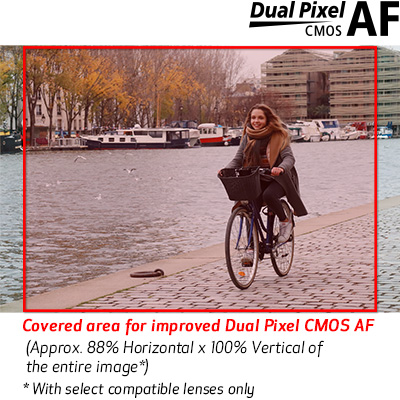
VLoggers Delight

The Vari-angle Touchscreen LCD provides a great way to interface with the camera especially when using the Dual Pixel CMOS AF features. Maintaining autofocus and being able to touch-drag your focus point has been popular on other Canon DSLR cameras and even the cinema range with the C100 Mark II & C200. The screen is able to flip out 180 degrees compared to only up & down on the M5 & M6. The camera does not have a image stabilisation on the sensor itself but digital IS which sacrifices some image resolution and crops in.
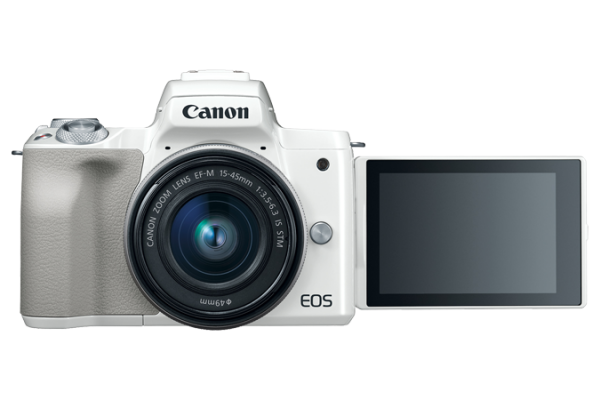 When using the OLED EVF, you can use the touch screen to move your AF point.
When using the OLED EVF, you can use the touch screen to move your AF point.
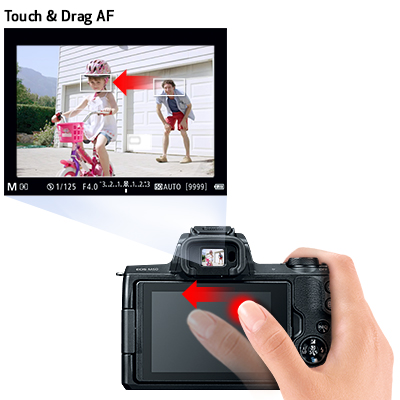
A 3.5mm audio jack is found on the left side of the camera to use an external microphone.
Pricing & Availability
The Canon EOS M50 retails for USD$899 with the 15-45mm lens, USD$1,249 for the 15-45mm & 55-200mm kit and USD$779 for the camera body alone.
